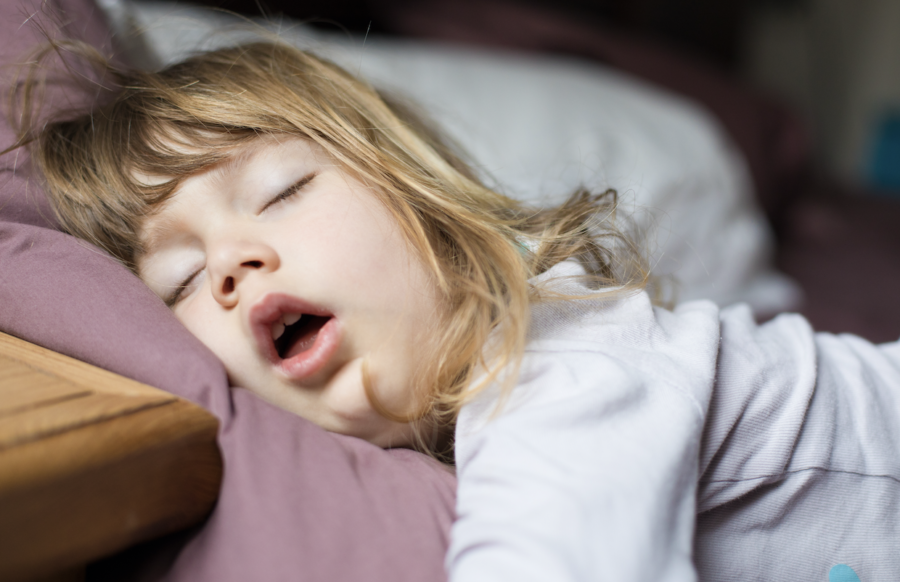Does your child snore? Or sound like they’re gasping for air at night? Here’s what you need to know about sleep apnea in kids.
The following written content by Taylor Leamey
Pediatric sleep apnea is relatively common, affecting from 1 to 4% of kids. Like adults, children with obstructive sleep apnea experience breathing interruptions while sleeping because the muscles in their airways collapse, leading to daytime sleepiness or potential behavioral issues. In the long term, if left untreated, sleep apnea in kids can cause serious health complications like stunted growth or heart issues.

The good news is that symptoms are pretty mild for most children, and they often outgrow it. Here’s what you need to know if you suspect your child might have sleep apnea.
What causes sleep apnea in children?
There are two main types of sleep apnea in kids — obstructive sleep apnea and central sleep apnea. With obstructive sleep apnea, the muscles in the airway collapse in on themselves, blocking your child’s ability to breathe. Central sleep apnea is when the brain isn’t sending the correct signals to the airway muscles.
We will talk primarily about obstructive sleep apnea, as it is more common than central sleep apnea. There are several causes of sleep apnea in children, like narrow facial bone structures, cleft palate or a high or low muscle tone.
However, two main factors largely contribute to OSA in children.
Subscribe here
Obesity
According to a cross-sectional study of children aged seven to 18, obesity is a significant contributor to sleep apnea. About 44% of children categorized as overweight had OSA compared to 9.1% prevalence in the “normal-weight group.”
Like in adults, obesity is one of the leading risk factors for sleep apnea. It happens because fat deposits collect in the upper respiratory tract, limiting muscle activity.
Enlarged tonsils and adenoids
Sleep apnea can arise in children because of enlarged tonsils or adenoids. The tonsils are found in the back of the throat and the adenoids in the nasal cavity. If either is enlarged, it can narrow the child’s airways, making it difficult for them to breathe while sleeping. The severity of the breathing interruption will depend on the side of the tonsils or adenoids. This doesn’t happen to all children, and it’s not exactly clear why it happens to some and not others. Exposure to viruses, bacteria or other infections can enlarge tonsils or adenoids. Read more from Cnet.





